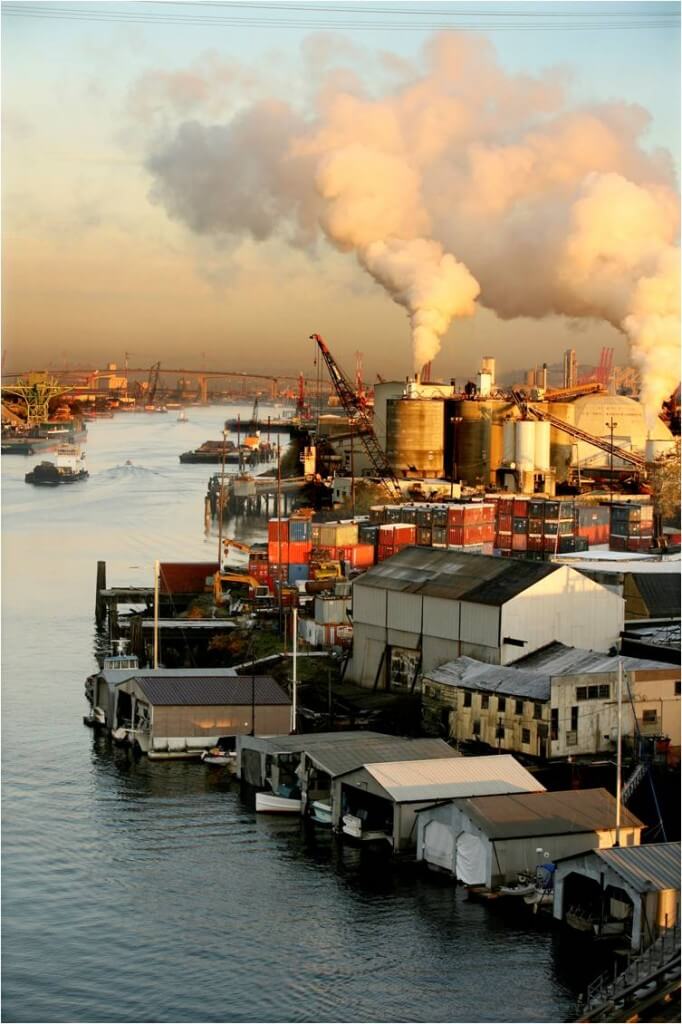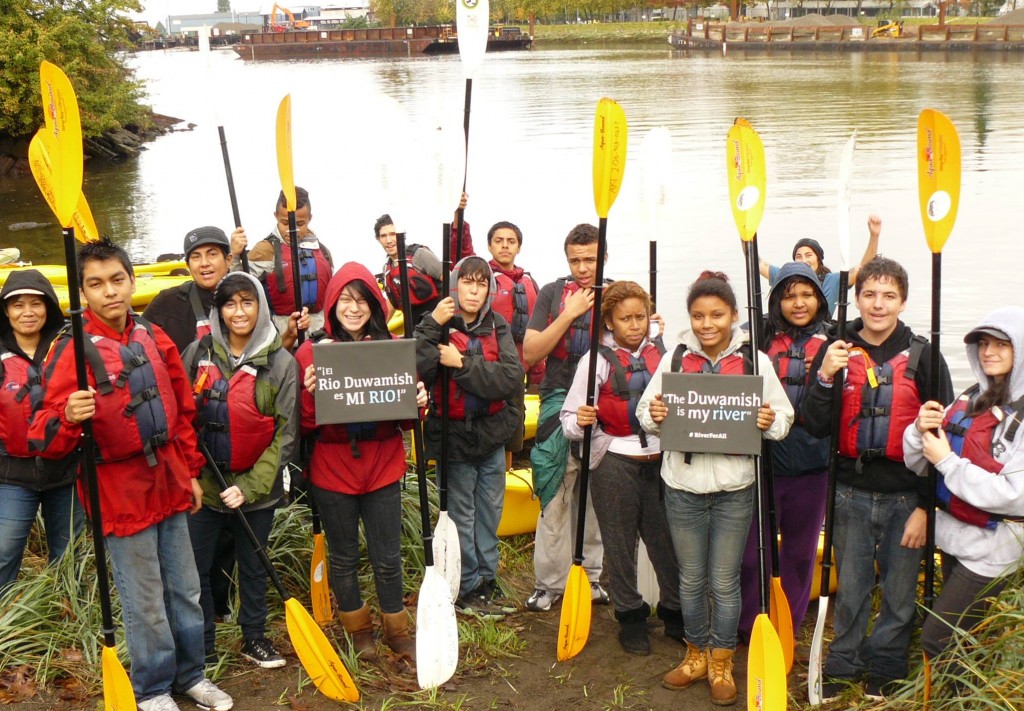Inclusive Community Engagement for Cleaning Up the Duwamish River
The Duwamish River is a 5.5 mile long Superfund site that flows through Seattle’s Duwamish Valley, a highly developed urban and industrial center south of downtown. It suffers from a legacy of pollution that has accumulated in the river’s sediments and throughout its food chain. Eighty percent of Seattle’s industrial lands are located within the Duwamish Manufacturing and Industrial District and over 8,000 people live in the immediately adjacent neighborhoods.
Most affected by the contamination are some of Seattle’s most marginalized and impoverished communities: low-income and homeless residents, immigrants and refugees, and tribal and subsistence fishing families. In addition to residents, three Native American tribes use the river for fishing and/or cultural ceremonies, and low-income, immigrant and homeless families from throughout King County harvest seafood from the river for subsistence, or to maintain cultural and community traditions. Further, due to industrial development, public access to the river is highly restricted. For all these reasons, attaining environmental justice is one of the driving forces shaping the community’s river cleanup and advocacy efforts.
Recognizing the need for an informed, educated and organized community to advocate for the most comprehensive, health-protective river cleanup possible, in 2013 the Duwamish River Cleanup Coalition/Technical Advisory Group (DRCC/TAG) staff set off to design and implement a community engagement plan to give the many diverse communities impacted by the contamination a voice in the cleanup plans. The effort was supported in part by a $59,000 River Network Urban Waters Capacity-Building grant funded by EPA that DRCC/TAG received between 2011 and 2013. Additional funding to support community participation in the cleanup was provided by an EPA Technical Assistance Grant (TAG) Program and a Public Participation Grant (PPG) from Washington State Department of Ecology.
DRCC/TAG led the community engagement work in partnership with organizations that include educational institutions, health providers, faith-based groups, business and neighborhood associations, PTAs, artist groups and others. The events, sponsored by the DRCC/TAG during and following the public comment period, reflected the organization’s culturally inclusive approach to community engagement.
The successes stemming from these efforts included:
- Over 2,300 comments were submitted to EPA through letters, photos, Facebook posts, digital stories and other media;
- Written comments were submitted in 10 languages, including English, Spanish, Vietnamese, Somali, Tagalog, Mien, Arabic, Chinese, Japanese, and Indonesian. Verbal comments were also submitted in Lushootseed, a native language spoken by the affected tribes;
- 3,350+ people were actively engaged during the public comment period, including nearly 1,300 who attended public hearings or meetings organized, designed or promoted by DRCC/TAG;
- 50+ community engagement events on the proposed cleanup plan were organized/co-designed by DRCC/TAG in a 105-day public comment period;
- Five formal public hearings were held by EPA (four more than the agency is legally required to). This included one hearing conducted 100% in Spanish, for the first time in EPA’s history (to the best of our knowledge);
- Information presented at events was shared in seven languages, five more than had been the practice before 2011. In addition, written materials were developed and distributed in three languages.
- After the public comment period ended, the ‘A River for All’ campaign spurred action from more than 43,000 people from across all 50 states in the nation, demanding a comprehensive, health-protective cleanup of the Duwamish River.
DRCC/TAG’s staff have been working with Potentially Responsible Parties (PRPs) to support a more comprehensive, health-protective cleanup compared to what EPA proposed in 2013. EPA released their Record of Decision in December 2014. Since, both the City of Seattle and King County (both PRPs) have passed resolutions and motions, respectively, supporting a more comprehensive cleanup; an interdepartmental team has been established that will coordinate the work different departments are doing with regard to the cleanup and other community priorities; and there have been calls for the City and the County to use a racial and social justice lens in all the work that is currently being done in the Duwamish Valley.
The next step is to make sure community members representing the affected communities guide the design and construction phase of the cleanup. DRCC/TAG expect this process to start in one or two years as approximately 70 other PRPs are currently dealing with the allocation process of who will pay for what and how much of the $342 million cleanup bill.






